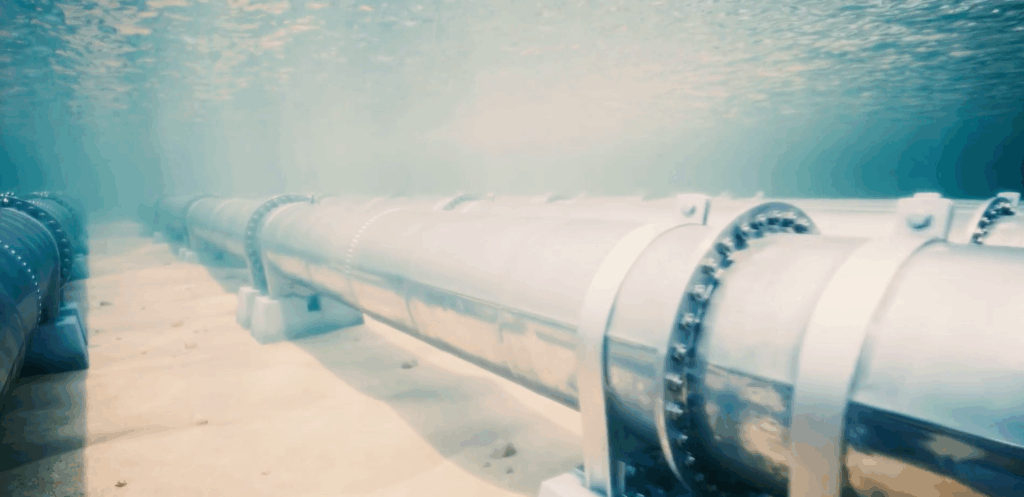Engineering leader HCL Technologies leverages SIMULIA Abaqus to optimize subsea pipeline performance – before a single pipe enters the water.
Challenge
HCL Technologies needed to analyze and validate subsea pipelines that must perform faultlessly under complex and varying seabed conditions.
Solution
The team leveraged the finite element analysis (FEA) capabilities in SIMULIA Abaqus to simulate pipe-laying, soil-pipe interaction and real-world loading conditions while automating standard simulations to accelerate processes.
Results
- Reduced simulation time from 7–10 days to just five minutes using automation
- Greater modeling precision for complex seabed conditions
- Increased confidence and accuracy – up to 99.9% correlation with physical results
- Laid the foundation for digital twin capabilities
—
Offshore pipelines transport some of the world’s most vital resources, often under extreme conditions and over vast distances. Their reliability is crucial – a single failure can have significant environmental consequences, pose serious safety risks, and cost millions in unplanned downtime and repairs.
“These pipelines must be 100% secure and safe,” said Prasanna Venkatesh, group technical manager at HCL Technologies, a global technology company providing end-to-end services, including simulation and product testing, to companies across multiple industries. “Before these pipelines are deployed in real-world conditions, they need to be structurally analyzed and validated. The subsea environment is complex, so we need to test how these pipes will operate under various seabed conditions.”
For example, the seabed might be made up of soft sand, clay or mud – materials which each have very different properties and can dramatically affect pipeline performance. “We need to understand soil-pipe interaction, including how the stiffness of mud or clay might affect stress distribution or potential failure,” Venkatesh said. “This is critical to assessing structural integrity, fatigue behavior, overall durability and lifespan. These pipelines operate under high pressure and varying temperatures, so understanding the smallest physical interactions can prevent major issues.”

Physically testing these interactions would be difficult, expensive, and incredibly time-consuming. That’s why HCL relies on SIMULIA Abaqus – digital simulation software from Dassault Systèmes – to create highly accurate models of pipelines that can be tested in an infinite number of scenarios.
“SIMULIA is best-in-class for non-linear simulations among CAE tools,” Venkatesh said. “It helps us deliver high-quality results on time, even for the most challenging projects. Moreover, it provides at least 99.9% accuracy, which is critical for our work.”
HCL starts by simulating the installation process. Using the finite element analysis (FEA) capabilities offered by SIMULIA Abaqus, it can replicate how the pipeline is laid on the seabed. “We begin by inputting dimensional data about the pipe, along with soil stiffness parameters and loading data, so that we can accurately model the environment,” Venkatesh said. “The pipe is initially supported with spring elements which are later removed to allow natural contact with the seabed. If the pipe is laid improperly, it could get stuck or displaced. This could cause issues that arise from instability.”
One common issue is lateral buckling – when a pipeline moves sideways due to thermal expansion or internal pressure – which can lead to structural failure. Instability may also trigger excessive vibration, resulting in leakage or fatigue that can shorten a pipeline’s lifespan (which is typically more than ten years) by three or more years. Free spans – sections of pipe that aren’t supported by the seabed – can disrupt fluid flow and cause pressure or stress issues. Meanwhile, improper coating or harsh environmental exposure can lead to corrosion and material degradation. All of these potential problems are accounted for in the simulation.

Residual tension (the tension remaining after the pipe has been installed on the seabed) is also captured in the simulation. HCL then simulates real conditions like fluid flow and incrementally adds load from hydrostatic pressure, buoyancy, shut-off pressure and temperature. “All these parameters are included to analyze how the pipeline behaves under operational loads,” Venkatesh said. “We evaluate centerline loads, lateral stability, bottom roughness and displacement – especially in critical areas such as open gaps or contact penetration stress. We review outputs such as axial tension and displacement to ensure the accuracy of the simulation.”
This type of simulation project could take over a week. However, HCL has been able to automate many key processes and, as a result, generate results in as little as five minutes.
“We have created a portal where clients input variables like pipe dimensions, wall thickness or material properties,” Venkatesh said. “Parameters are pre-defined and the simulation runs automatically. Depending on the number of steps, the full run might take 15 to 20 minutes, but it can be as quick as five minutes – with the report generated shortly afterward. It’s a streamlined process and is our first step toward a virtual twin approach.”

Interested in the latest in simulation? Looking for advice and best practices? Want to discuss simulation with fellow users and Dassault Systèmes experts? The SIMULIA Community is the place to find the latest resources for SIMULIA software and to collaborate with other users. The key that unlocks the door of innovative thinking and knowledge building, the SIMULIA Community provides you with the tools you need to expand your knowledge, whenever and wherever.

